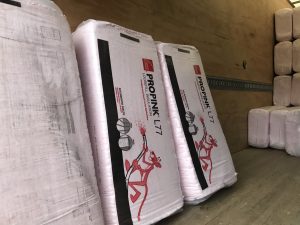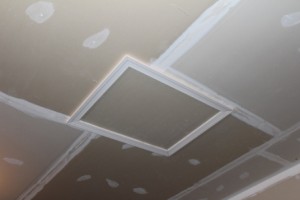Attic Insulation: What’s The Best Time to Blow it?
0 Comments | Posted by armchairbuilder in Owner-Builder

December 9, 2019
So you’re building your own dream home in a cold weather climate. And you’ve decided to go with an economical way to add an R60 insulation to your attic = blown in loose fill fiberglass. You can blow the insulation in any time after ceiling drywall is hung in the home. So, you can do this any time it’s convenient right? Wrong. It’s extremely important to insulate the ceiling of the new home as soon as possible. Here’s why.
The first time we can conceivably blow in the attic insulation is right after the ceiling drywall is hung…no sooner. And what construction activity comes after hanging drywall? You guessed it, taping the drywall. In cold weather, we always need some type of heat source in the home while finishing drywall so it dries properly. It’s best to have the furnace on and running during taping…but we always make sure to shut off the furnace during sanding, sweeping and cleanup. If we don’t shut the furnace down during the dusty part of the job, all of that dust will make its way back into the ductwork and some will get into the brand new furnace = NOT GOOD.

But even if we have a good heat source during the drywall finishing operations, the drywall adjacent to the attic can get extremely cold being next to a cold attic space. Let’s say the outside air temperature is 20 degrees. This means the vented attic will be somewhere close to 20 degrees. This cold temperature will slow down the dry time of the drywall tape on the ceilings. And when the tape doesn’t dry, it can slow down a job site in a big way. In an extremely cold temperature situation, the drywall tape and mud may freeze, which can cause even more problems.
So the moral of the story is, we always need to get the furnace fired up and the attic insulation blown as soon as the drywall hang is complete.

